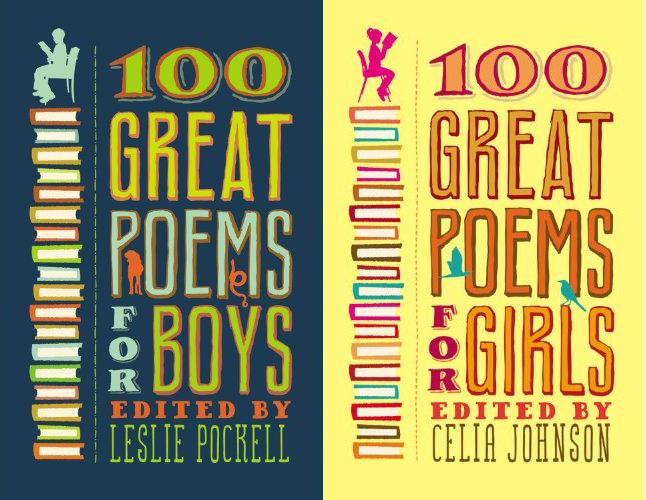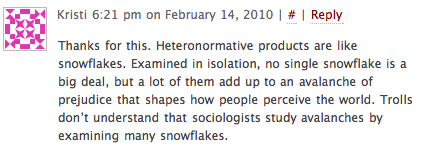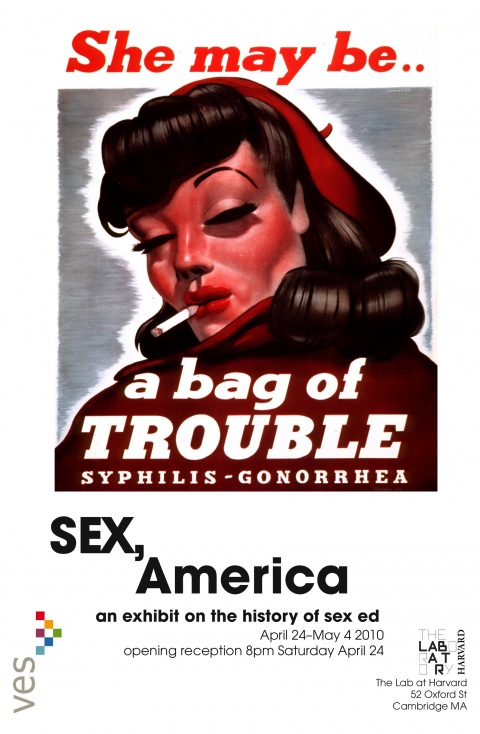Note: I began this entry way back in January, before my semester began. I have not had a chance to return to it until now, during my spring break. When I first started writing the entry I was already feeling burnt out and disenchanted with the academy. Those feelings have greatly intensified over the course of the semester as I daily confront the limiting (and debilitating) logics of the academic industrial complex. I feel compelled to return to Smith’s essay now, and to finish writing this entry, because these questions of how to balance work and life, the personal and the academic are becoming an important focus in my queering ethics class (see here, here and here)
In the midst of prepping for my upcoming classes I came across an article that I downloaded last semester by Andrea Smith: “Social Justice Activism in the Academic Industrial Complex.” It was published in the Journal of Feminist Studies in Religion in 2007 before she was unjustly denied tenured at the University of Michigan.
In her article, which is part of a roundtable discussion on “Got Life? Finding Balance and Making Boundaries in the Academy,” Smith argues that our attempts at negotiating between academic and personal/activist lives require more than searching for ways to balance our various demands. Instead, we must ask why, as in: “Why has being a good scholar and academic come to mean that one should be working incessantly at the expense of doing social-justice work, having fun, or maintaining interests outside academia” (141)? And we must “deconstruct the logic of the academic industrial complex to see how it has trapped us into needlessly thinking we must choose between academia and having a life” (141). Yes! Finding a balance is not enough; the struggle to find that balance places the burden on individual academic laborers to adjust their lives while leaving the larger system that prioritizes academic production over personal/activist practices intact and untroubled. We need to interrogate why the academic system functions as it does and why it so often encourages (and demands) that we be unbalanced (and by unbalanced I mean an overemphasis on work over life and a dysfunctional approach to work/life that contributes to emotional/physical distress).
In this brief article (only 5 pages long), Smith has two overarching goals: 1. provide a brief description of the academic industrial complex and 2. offer up 3 key strategies for managing the academy effectively.
What is the academic industrial complex?
Smith draws upon Althusser, arguing that higher education is an ideological state apparatus “designed to teach people to be subject to colonialist and capitalist structures” (141). She also draws upon Bourdieu–most notably his book (with Jean-Claude Paseron), Reproduction in Education, Society, and Culture–and his emphasis on how the educational system reproduces cultural capital/status thereby enabling those in power to “secure the terms of discourse and knowledge to their benefit” (141). Here is a passage (emphasis mine):
The educational system is particularly important in the reproduction of symbolic capital under capitalism. The standardization of academic qualifications–a given amount of labor and time in academic apprenticeship is exchanged for a given amount of cultural capital, the degree–enables a differentiation in power ascribed to permanent positions in society and hence to the biological agents who inhabit these positions. According to Bourdieu, what is significant about the educational system is not just the set of ideologies it promotes, but the set of tacitly unequal institutional power relations it ensures through the fiction of equal access to education. However, in order to function as an ideological state apparatus, the academy must disavow its complicity in capitalism by claiming itself as a meritocratic system. That is, only those academics who are smart and work hard will succeed (141).
One damaging outcome of the academic industrial complex is that academics are not supposed to (appear to) have a life outside of the academy. After all, if you have time to do other things, you must not be working hard enough on your research: “if one appears not to be working endlessly for the academic industrial complex, that person will be condemned as being a lazy or underserving scholar” (141). And, I would add, if one appears not to be working endlessly in the right and proper way, that person will be condemned as not rigorous (and serious) enough. Here’s something that I wrote about rigor in an earlier post:
As a professional academic, I bristle at the notion of being rigorous (another definition of discipline), not because I don’t promote or practice serious engagement but because the call for rigor or the claim that one is not rigorous enough often seem to be used to dismiss ideas/theories/intellectual labor that is serious and smart and deep, but that doesn’t fit the standard of what is/who can be rigorous. (Addendum from 1.6.10: I just happened across this great post from the Crunk Feminist Collective that critically interrogates the call for rigor from within women’s studies.)
Survival Strategies:
After recognizing the unbalanced vision of the academic industrial complex, Smith offers up three strategies for survival (understand intellectual work as collaborative, manage time strategically and think beyond the nonprofit and academic industrial complexes), one of which I will briefly discuss here:
UNDERSTAND INTELLECTUAL WORK AS COLLABORATIVE While academics are encouraged to do work that proves their individual brilliance, they should be sharing in work with others, collaborating in ways that enable them to draw upon their strengths and that contribute to a “larger collaborate intellectual project” whose goal is “to perpetuate a conversation that will continue beyond our own contributions” (142). I really like this line:
If years from now no one remembers what we said, then we will have still done important work if we did our part to keep the larger conversation going (142).
Does this sort of collaborative work actually get valued within the academic industrial complex, especially in the humanities? In a system that seems dependent on trading individual academic projects/products for increased status, can we imagine spaces for collaborative work that de-emphasize products (articles, books, fancy theories) and emphasize process (engaging with ideas and each other)? What are the various factors that get in the way of these collaborations?
There is so much more that I want to write about Smith’s essay and my own reflections on survival in/and the academic industrial complex. But it will need to wait for now. In concluding this brief entry, I want to offer up some of Smith’s final remarks in the essay:
Because the actual structure of the academy goes unquestioned–from tenure processes to grading systems to academic hierarchies–even progressives get trapped in the academy’s meritocratic myth, which either makes them insane or turns them into fascists. All the collective action we support outside the academy seems to disappear inside it–as we slave away in our offices in order to make sure everyone knows how busy and hardworking we are. Instead, we could be working together to support each other, build community, demystify the academic industrial complex, swap survival strategies, and promote life for all of us (145).
But, wait. This is what I really want to end this post with: Disco and roller skating? Who could ask for more! This video for “I will survive” conjures up memories of my fourth grade self and skating every Saturday at the rink in Salem, Virginia.




